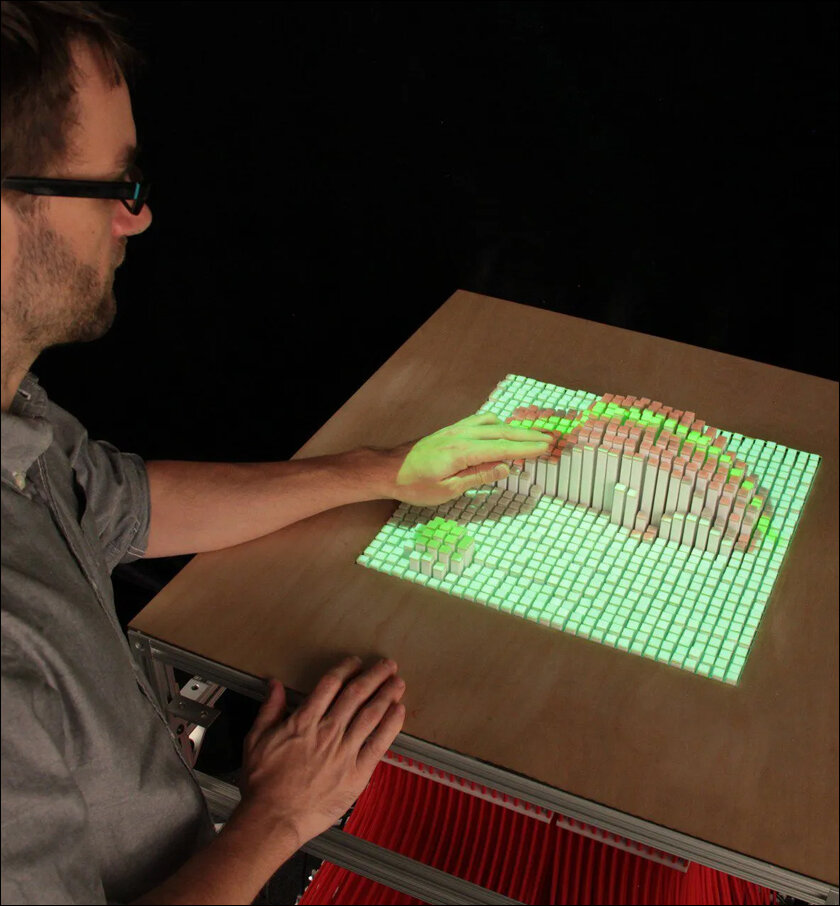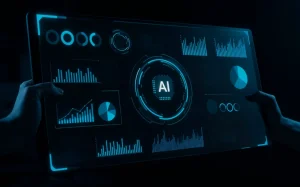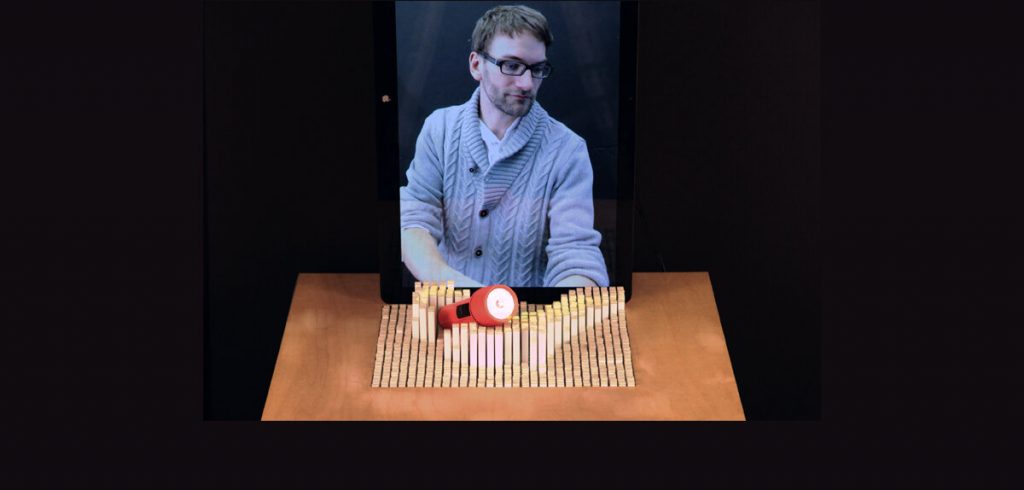Unlike previous mechanically driven displays, this one is precise enough to generate scrolling text and apparently versatile enough to hold and shake a chemistry beaker.
Interactive shape displays are often referred to as 2.5D actuated shaped displays, mainly due to their ability to create tangible physical structures on a flat surface. These shape-changing interfaces make it possible to instantly create physical models that can be touched, felt, and interacted with, without the need for a 3D printer or long hours of designing, prototyping, and testing.

As opposed to traditional displays, this new class of I/O devices renders physical shapes that can be manipulated through touch and any changes or deformations are instantly reflected on their digital compositions. Not to be confused with curved displays, where digital displays use pixels, these interfaces use physical parts that can move.
MIT’s inFORM Display
It was about 11 years ago that two MIT Ph.D. students, inspired by pinscreen toys, created the inFORM display that went viral and captured the imagination of people around the world. Daniel Leithinger and Sean Follmer built the inFORM display which is basically a table made of movable pins powered by motors that can not only render physical objects but also people, in real time!
The inFORM display is built on a 15-by-15-inch table that houses 900 pins, each one powered by a separate motor, and each motor connected to a custom circuit board with a microcontroller that then connects to a computer. By using the computer to move the pins to different heights, shapes can be formed, sort of like Minecraft shapes made with little boxes.
To quote Daniel Leithinger “That shape can be a three-dimensional model you load from a computer; it can be a user interface, or it can be a shape of a remote person.” If you’re wondering how an entire person could be rendered with pins, think of the pin art walls you see at malls where people press their bodies against a wall of plastic pins and leave an impression on the other side.
To achieve this with the inFORM display, the duo from MIT used an XBOX Kinect, a gaming controller that features sensors built for motion-intensive gaming. The Kinect sensor is then used to render a 3D model of a person or for example, a person’s hand, that you can interact with in real-time, like holding hands over the phone!
Soft robotic shape displays
Now while the inFORM display made its viral debut over a decade ago, last year in July, a team of researchers at the Max Planck Institute for Intelligent Systems and The University of Colorado Boulder, created a shape display made of robotic “muscles.”
That’s right, where the inFORM shape display uses an array of pins, the robotic shape display uses scalable cellular units, or “soft robotic muscles,” that can not only sense outside pressure but also change shape to form intricate patterns in direct correlation to the amount of pressure it senses. Unlike previous mechanically driven displays that are limited to the shape of the pins, this one is precise enough to generate scrolling text and apparently versatile enough to hold and shake a chemistry beaker.
If you’re wondering how a shape display can shake a beaker, the robotic shape display combines control circuitry, magnetic sensing, and high-speed electrohydraulic soft actuation to move each robotic muscle up to 3,000 times a minute. Additionally, it also uses a minimum amount of mechanical actuators and compensates with a flexible surface which, as opposed to rigid mechanical pins, can stretch itself between the mechanical actuators. While this reduces the risk of mechanical failure, it also greatly enhances the digital “hand-holding” experience with the use of tactile rendering. Unlike a hand made from mechanical pins, this shape display can make an identical copy of your hand that can be controlled by you and interacted with by others.
The magic touch
Imagine a desk that could change into a custom work environment on demand with different shapes and different types of input methods for different applications. That’s exactly the point of a deformable desk and that’s just the beginning of what we can do with shape displays. From helping industrial designers render physical CAD models, to helping blind children understand art, or even converting text to brail in real-time, there’s so much more that can be done when you add the dimension of touch.
To quote Brian Johnson, one of two lead authors of the research team “As technology has progressed, we started with sending text over long distances, then audio and later video, but we’re still missing touch.“
In case you missed:
- Scientists gave a mushroom robotic legs and the results may frighten you
- Tiny robots made from human cells can heal wounds!
- Having two left thumbs may no longer be a bad thing
- Lab-Grown Brain Thinks It’s a Butterfly: Proof We’re in a Simulation?
- Omnidirectional VR treadmills, go anywhere without going anywhere!
- These AI powered devices add smells to virtual worlds
- Mainstream AI workloads too resource-hungry? Try Hala Point, Intel’s largest Neuromorphic computer
- This Prosthetic Hand can detach and crawl across the floor. How cool is that?
- Neuralink Blindsight and Gennaris Bionic eye, the future of ophthalmology?
- NVIDIA’s Isaac GR00T N1: From Lab Prototype to Real-World Robot Brain









